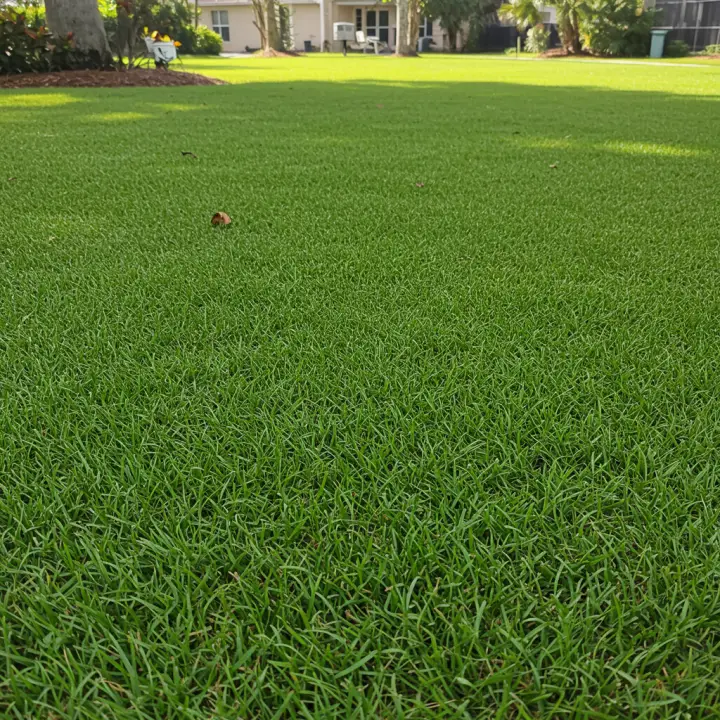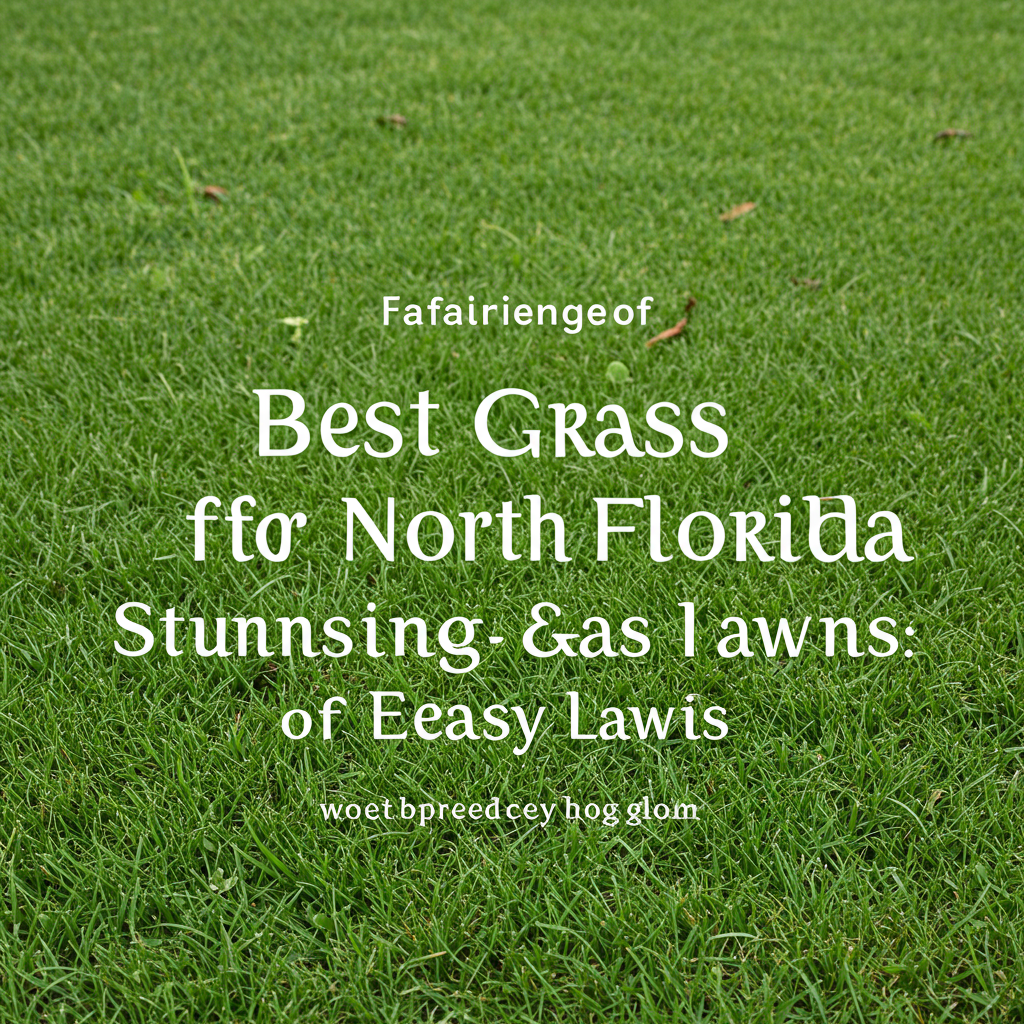Finding the best grass to plant in North Florida requires matching the right turf type to your specific yard conditions, maintenance preferences, and lifestyle. North Florida’s unique climate, with its hot, humid summers and occasional winter freezes, presents a special challenge that makes this choice critical for a lush, healthy lawn. This comprehensive guide breaks down the top grass varieties, including St. Augustine, Zoysia, Centipede, Bahiagrass, and Bermuda, detailing their pros, cons, and ideal growing conditions to help you cultivate the perfect green space.
Your Guide to a Thriving North Florida Lawn

Welcome to North Florida, a region where the southern heat meets the reality of seasonal cold snaps. This unique “transition zone” climate means that selecting the right grass is not just a preference—it’s the foundation of a successful lawn. A beautiful, green lawn enhances your home’s curb appeal, provides a safe play area for kids and pets, and can even increase your property value.
But with sandy soil, high humidity, and fluctuating temperatures, how do you choose? This guide will walk you through everything you need to know, from understanding your local environment to comparing the top grass contenders and learning the best practices for planting and care.
Understanding North Florida’s Unique Climate and Soil
Before you can pick a grass, you must understand what it will be up against. North Florida is distinct from the central and southern parts of the state.
- The Transition Zone: This area experiences both punishing summer heat and legitimate winter freezes. Grass must be able to tolerate high humidity and temperatures in the 90s, as well as occasional dips below 32°F. This rules out many sensitive tropical grasses and some cool-season varieties.
- Sandy Soil: Much of Florida has sandy soil, which drains very quickly. This means it doesn’t hold water or nutrients well. The best grasses for the region are adapted to these conditions and have deep root systems to find moisture.
- High Humidity and Rainfall: While the soil drains quickly, the air is often moist. This creates a perfect environment for fungal diseases. Choosing a disease-resistant grass variety is a major advantage.
Key Factors to Consider Before Choosing Your Grass
Your perfect lawn is a personal choice. What works for your neighbor might not work for you. Assess your yard and lifestyle by considering these critical factors.
Sun Exposure: Full Sun vs. Shade
This is the most important factor. No amount of fertilizer or water will make a sun-loving grass thrive in the shade.
- Full Sun: Does your yard get 6-8+ hours of direct, unfiltered sunlight per day? If so, you have many options, like Bermuda and Bahiagrass.
- Partial Shade: Does your yard have large trees that cast shadows for part of the day? You’ll need a shade-tolerant variety, such as certain cultivars of St. Augustine or Zoysia.
- Heavy Shade: If your yard gets less than 4 hours of direct sun, growing a dense, traditional lawn will be extremely difficult. Consider ground cover alternatives.
Water Needs and Drought Tolerance
North Florida sees both heavy rains and periods of drought. Local watering restrictions can also impact your routine.
- High Drought Tolerance: Bahiagrass is the champion here, requiring minimal supplemental watering once established.
- Moderate Drought Tolerance: Zoysia and Centipede can handle short dry spells well.
- Low Drought Tolerance: St. Augustine grass is notoriously thirsty and will be the first to show stress without regular watering.
Foot Traffic and Durability
Consider how you use your lawn. Is it a pristine showcase or the neighborhood soccer field?
- High Traffic: Bermuda grass is the top choice for durability, which is why it’s used on athletic fields. Zoysia also holds up very well to foot traffic.
- Moderate Traffic: St. Augustine can handle typical family use but will show wear in concentrated areas.
- Low Traffic: Centipede grass is more delicate and is not ideal for high-traffic zones.
Maintenance Level: How Much Work Do You Want?
Be honest with yourself. Do you enjoy weekly yard work, or do you prefer a more hands-off approach?
- Low Maintenance: Centipede and Bahiagrass are the winners. They require less frequent mowing, fertilizing, and watering.
- Moderate Maintenance: Zoysia and St. Augustine require regular mowing, consistent watering, and a structured fertilization schedule to look their best.
- High Maintenance: Bermuda grass requires the most work. It needs frequent mowing (often with a reel mower), regular fertilization, and dethatching to prevent buildup.
Top 5 Grass Types for North Florida Lawns
Now, let’s dive into the best grass varieties for the region. We’ll cover the good, the bad, and who each grass is best for.
1. St. Augustine Grass: The Shade-Tolerant Classic
St. Augustine is arguably the most popular lawn grass in Florida. It creates a lush, dense, blue-green carpet that many homeowners love.
- Overview: This warm-season grass spreads via above-ground runners called stolons. It establishes quickly from sod and has a coarse, broad-leaf texture. Its biggest selling point is its superior shade tolerance compared to other warm-season grasses.
- Pros:
- Excellent shade tolerance (especially cultivars like ‘Bitterblue’ and ‘Seville’).
- Establishes very quickly from sod.
- Creates a thick, dense turf that crowds out weeds.
- Beautiful, rich color.
- Cons:
- Requires significant amounts of water.
- Highly susceptible to pests like chinch bugs.
- Prone to fungal diseases like gray leaf spot and large patch.
- Does not tolerate cold as well as other options, and can be damaged by a hard freeze.
- Cannot be grown from seed.
- Best For: Homeowners with yards that have partial shade from large oak or pine trees, who are committed to a regular watering and pest-management schedule.
- Popular Cultivars for North Florida: ‘Floratam’ (most common, but needs full sun), ‘Bitterblue’, ‘Seville’, and ‘Palmetto’.
2. Zoysia Grass: The Luxurious Barefoot Grass
Zoysia is the “luxury” option. It forms an incredibly dense, soft, fine-textured lawn that feels wonderful underfoot. It’s known for its beauty and durability.
- Overview: Zoysia is a slow-growing grass that spreads through both stolons and below-ground rhizomes. This growth habit makes it extremely dense and weed-resistant once established, but also slow to recover from damage.
- Pros:
- Excellent drought tolerance once established due to its deep root system.
- Good shade tolerance (better than Bermuda, but less than St. Augustine).
- Very good foot traffic tolerance.
- Forms a dense turf that chokes out weeds.
- Resistant to many pests and diseases.
- Cons:
- Very slow to establish and spread.
- Can be expensive to install (sod is recommended).
- Builds up thatch over time, requiring periodic dethatching.
- Goes dormant and turns brown quickly after the first frost.
- Best For: Homeowners who prioritize a high-end, manicured look and are willing to be patient during its establishment phase. It’s great for families who use their lawn for recreation.
- Popular Cultivars for North Florida: ‘Empire’, ‘Emerald’, and ‘Zeon’.
3. Centipede Grass: The “Lazy Man’s Grass”
If low maintenance is your absolute top priority, Centipede grass is your answer. It thrives on a bit of neglect, making it perfect for busy homeowners.
- Overview: This apple-green grass is known for its slow growth rate and minimal needs. It spreads by stolons and forms a relatively dense turf in the acidic, sandy soils common in North Florida.
- Pros:
- Extremely low maintenance; requires very little fertilizer.
- Slow-growing, meaning less frequent mowing.
- Fairly drought tolerant.
- Does well in poor, acidic soil.
- Cons:
- Does not tolerate foot traffic well.
- Shallow root system makes it sensitive to certain stresses.
- Can be prone to “Cent (Note: MAX_TOKENS)ipede decline” if

